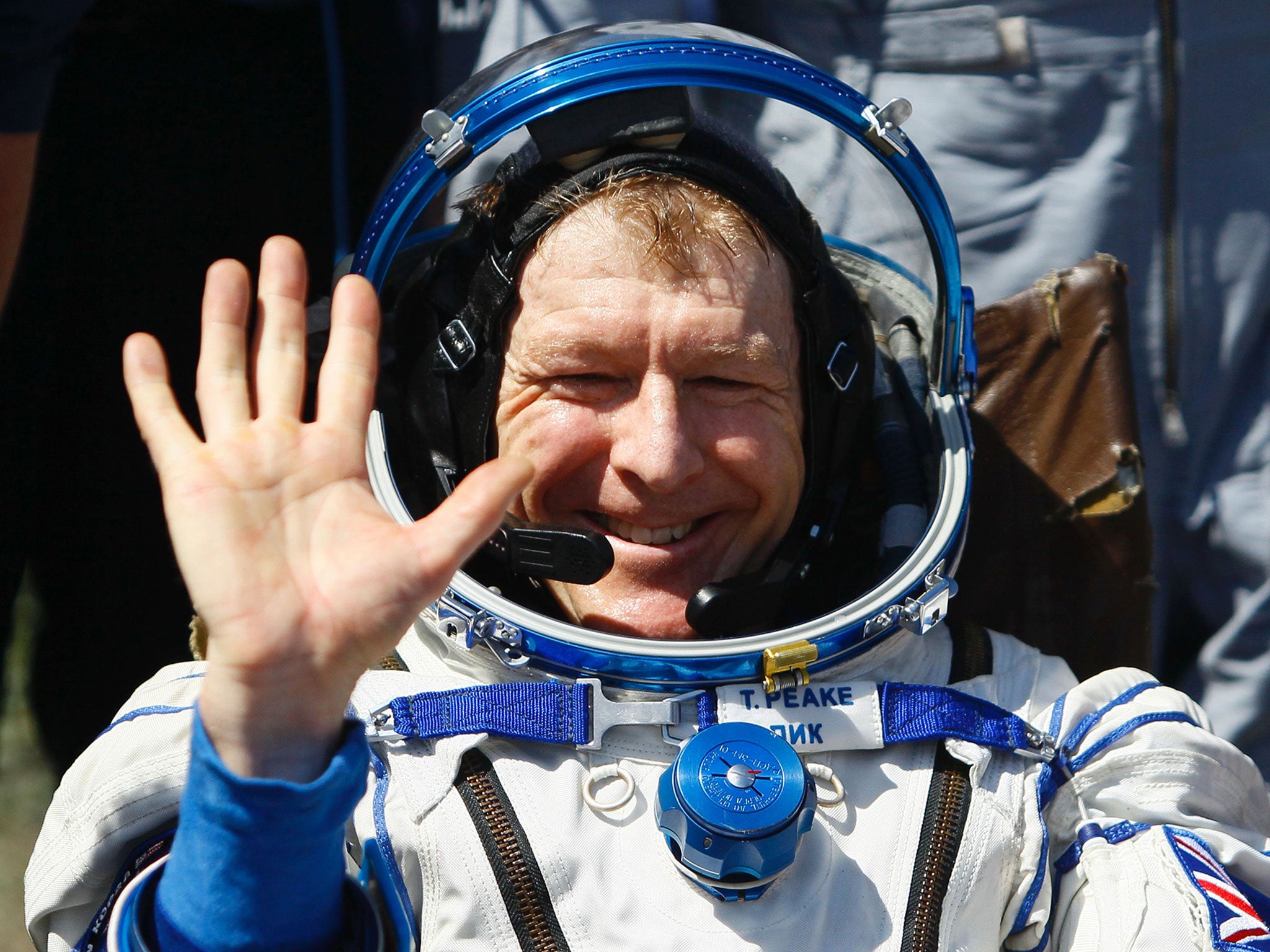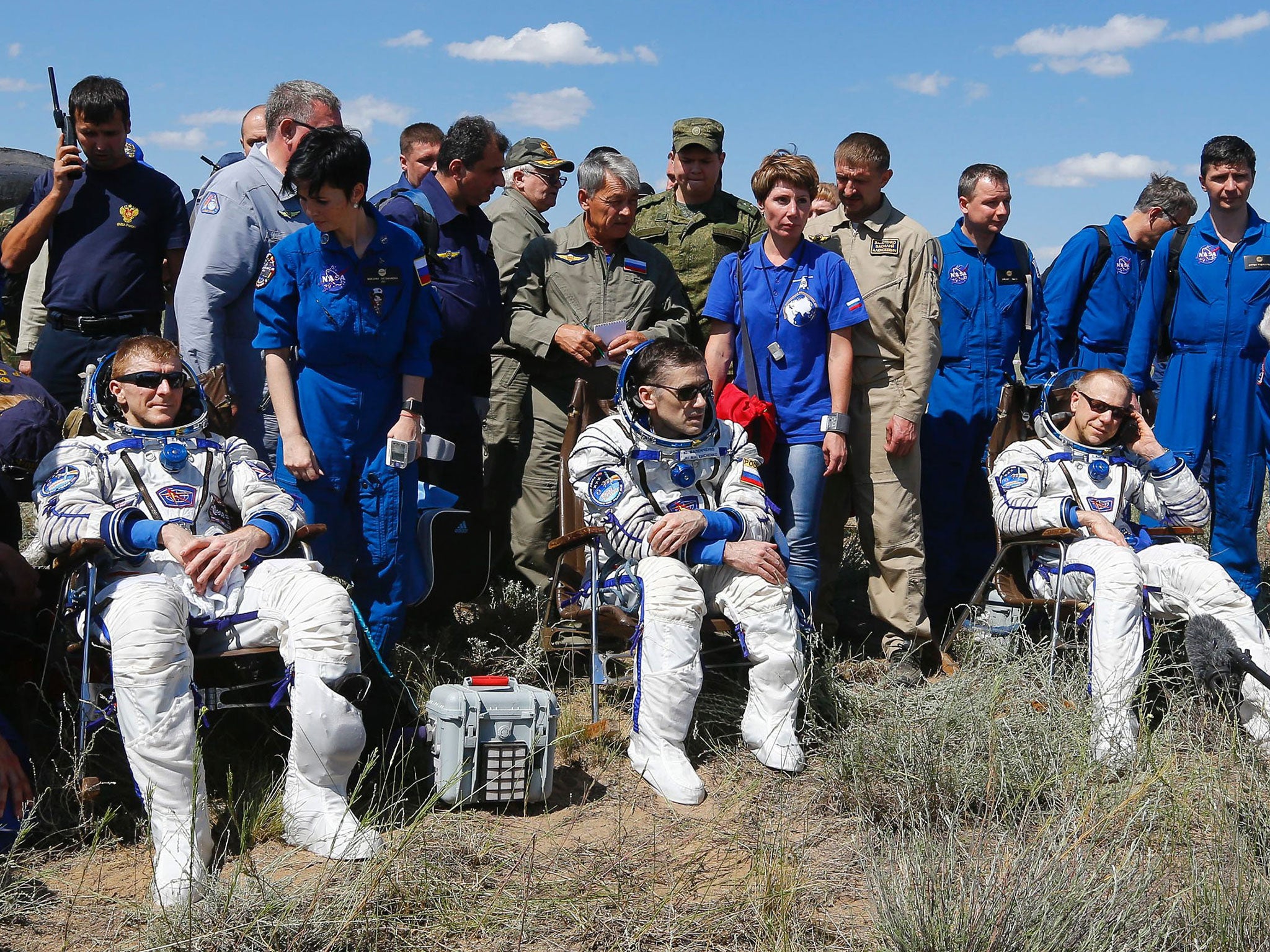Tim Peake returns to Earth: British astronaut calls journey back 'the best ride I've been on ever'
The Briton says he might celebrate with pizza following the end of his six-month space mission
Your support helps us to tell the story
From reproductive rights to climate change to Big Tech, The Independent is on the ground when the story is developing. Whether it's investigating the financials of Elon Musk's pro-Trump PAC or producing our latest documentary, 'The A Word', which shines a light on the American women fighting for reproductive rights, we know how important it is to parse out the facts from the messaging.
At such a critical moment in US history, we need reporters on the ground. Your donation allows us to keep sending journalists to speak to both sides of the story.
The Independent is trusted by Americans across the entire political spectrum. And unlike many other quality news outlets, we choose not to lock Americans out of our reporting and analysis with paywalls. We believe quality journalism should be available to everyone, paid for by those who can afford it.
Your support makes all the difference.British Astronaut Tim Peake has landed safely after the Soyuz capsule completed its “deorbit burn”, and parachuted the crew into Kazakhstan.
The capsule touched down at 10.15 BST, as forecast.
Speaking at the landing site in Kazakhstan, Major Peake said the trip to the International Space Station and the journey back to Earth was “incredible, the best ride I’ve been on ever, from start to finish.

“The smells on Earth are so strong. It’s wonderful to be back on planet Earth. I’ll look forward to seeing the family now," he added..
“It’s a life changing experience, to be up there for six months," he said. “I’d love some cool rain right now, it was very hot in the capsule and very hot in the suit.
As for what he will be doing now he is back on Earth, he said: “I think I’ll be having some pizza later and a cold beer”.
Major Peake became the second astronaut to go into space bearing the British flag, after Helen Sharman in 1991. During his time in space he has taken part in hundreds of experiments, performed a spacewalk and ran the London Marathon on a treadmill.

First reports said the craft had landed on its side, having been caught by the wind. This is not unusual, according to mission controllers.
Travelling with Major Peake were crewmates American Nasa astronaut Colonel Tim Kopra and Russian cosmonaut Yuri Malenchenko
A rescue and recovery team raced to the landing site almost 300 miles south west of the major city of Karaganda.
During a news conference before leaving the International Space Station, Major Peake spoke about his return to Earth: “It is going to be quite tricky for me to adapt. It's probably going to take me two or three days before I feel well.“
“It will take me several months before my body fully recovers in terms of bone density. And it will be interesting to see any lasting changes to eyesight etcetera.
“But generally speaking in two or three days I should be fairly comfortable back on Earth.”
The journey home for Major Peake began after the undocking of the Soyuz and a four-minute 37-second rocket motor blast - the “deorbit burn” - that set the capsule on track for re-entry into the Earth's atmosphere.
During the descent, Major Peake, wearing a Sokul spacesuit, was strapped into the right-hand seat.
Only the middle section of the spacecraft, the descent module, completed the trip back to Earth.
Soon after the deorbit burn, explosive bolts split the Soyuz into its component parts.
The spherical orbital module in which the crew members sat during their launch and the service module housing control systems and machinery were allowed to fall into the atmosphere and burn up.
As the descent module plunged towards the Earth, friction on its forward-facing heat shield slowed its speed from 17,398mph (28,000kph) to 514mph (827kph) and raised the temperature to 1,600C.As planned, the return to Earth was controlled automatically by the craft's on-board computer. In an emergency, the crew, led by commander Malenchenko, could have altererd their trajectory manually using a hand controller.
The deorbit burn, designed to brake the spacecraft and allow it to drop out of orbit, took place at 9.22am UK time and was one of the most critical points in the re-entry and descent programme.
If the burn is too short, the astronauts could skip across the atmosphere like a stone skimming a lake and fly out into space. If too long, they could come in at too steep an angle too fast, and risk being incinerated.
Press Association contributed to this report

Join our commenting forum
Join thought-provoking conversations, follow other Independent readers and see their replies
Comments